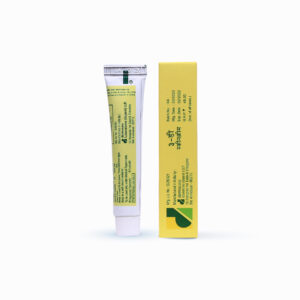NEOMYCIN + MICONAZOLE + FLUOCINOLONE
Neomycin: Neomycin is an antibiotic drug that is commonly used to treat various bacterial infections. It belongs to the class of drugs known as aminoglycosides.
Neomycin works by inhibiting the synthesis of essential proteins in the bacteria, thereby preventing their growth and effectively killing them. It has bactericidal activity against a wide range of gram-positive and gram-negative bacteria.
This drug is often used topically to treat skin infections, such as wounds, burns, and cuts. It is also used orally to treat intestinal infections, especially those caused by E. coli or other gram-negative bacteria. Neomycin can also be used preoperatively in the bowel to reduce the risk of infection.
The dose of neomycin varies depending on the type and severity of the infection being treated. For topical use, a thin layer of the neomycin ointment or cream should be applied to the affected area 2-4 times daily. For oral use, the typical adult dose ranges from 1-2 grams daily, divided into 3 or 4 equal doses.
As with any medication, neomycin may cause some side effects. Common side effects include skin irritation, itching, and redness at the site of application. When taken orally, it can cause gastrointestinal side effects such as nausea, vomiting, diarrhea, and stomach cramps. In rare cases, neomycin can cause hearing loss or kidney damage, especially when used in high doses or for a long duration. This drug should be used with caution in patients with pre-existing kidney or hearing problems.
It is important to note that neomycin should not be used in patients with a known hypersensitivity to aminoglycosides or in those with a perforated eardrum. It can also interact with other medications, so it is essential to inform the doctor about all the medications being taken before starting neomycin treatment.
Overall, neomycin is an effective antibiotic drug commonly used to treat bacterial infections. However, it should be used under the guidance of a healthcare professional, and its potential side effects should be carefully considered.
Miconazole: Miconazole is an antifungal medication that is primarily used to treat infections caused by fungus. It can be used topically (on the skin) or intravaginally (inside the vagina) to treat conditions such as athlete’s foot, ringworm, jock itch, and yeast infections.
The mechanism of action of miconazole involves its ability to inhibit the synthesis of ergosterol, a component of the fungal cell membrane. By disrupting the cell membrane, miconazole effectively kills the fungus and treats the infection.
For topical use, miconazole is available in the form of creams, powders, and sprays. It should be applied to the affected area(s) of the skin or nails, usually 1-2 times a day for several weeks or as directed by a healthcare professional.
For intravaginal use, miconazole is available as vaginal suppositories or creams. The recommended dose is typically a single 1200 mg suppository or one applicatorful of cream, inserted deeply into the vagina at bedtime for 1-7 days, depending on the severity of the infection.
As with any medication, miconazole can have side effects. Common side effects include skin irritation, itching, burning, or redness at the application site(s). These side effects are usually mild and temporary. In rare cases, allergic reactions such as rash, itching, swelling, severe dizziness, or difficulty breathing may occur. If any severe side effects occur, medical attention should be sought immediately.
It is important to note that miconazole may interact with certain medications, so it is advisable to inform your healthcare provider about any other medications you are taking. Pregnant and breastfeeding women should also consult with their healthcare provider before using miconazole.
Fluocinolone: Fluocinolone is a synthetic corticosteroid drug that is primarily used topically to treat various skin conditions. It is available in various forms such as cream, ointment, solution, gel, and oil.
The main mechanism of action of fluocinolone is its anti-inflammatory and immunosuppressive effects. It works by inhibiting the production of inflammatory mediators and suppressing the activity of immune cells involved in the inflammatory response. This helps to relieve symptoms such as itching, redness, swelling, and discomfort associated with skin disorders.
The dose of fluocinolone will depend on the specific formulation and the severity of the condition being treated. It is usually applied thinly to the affected area once daily or as directed by a healthcare professional. It is important to follow the instructions provided by your doctor or the product label.
Like all medications, fluocinolone may cause side effects. Common side effects may include skin irritation, burning, itching, dryness, or redness at the application site. These side effects are usually mild and temporary. However, if these symptoms persist or worsen, it is advisable to consult a healthcare professional.
In some cases, especially when used for prolonged periods or on large areas of the body, fluocinolone can be absorbed into the bloodstream and may cause systemic side effects. These may include adrenal suppression, Cushing’s syndrome, growth retardation in children, glaucoma, cataracts, and skin thinning. Long-term or excessive use of fluocinolone should be avoided, and it is important to follow the directions provided by your healthcare professional.
It is essential to inform your doctor about any other medications you are taking, as drug interactions can occur. Additionally, fluocinolone should not be applied to open wounds, infected areas, or near the eyes, mouth, or genitals unless specifically instructed by your doctor.
Overall, fluocinolone is an effective topical corticosteroid for treating various skin conditions. However, it should only be used under the supervision of a healthcare professional and for the recommended duration to minimize the risk of side effects.

